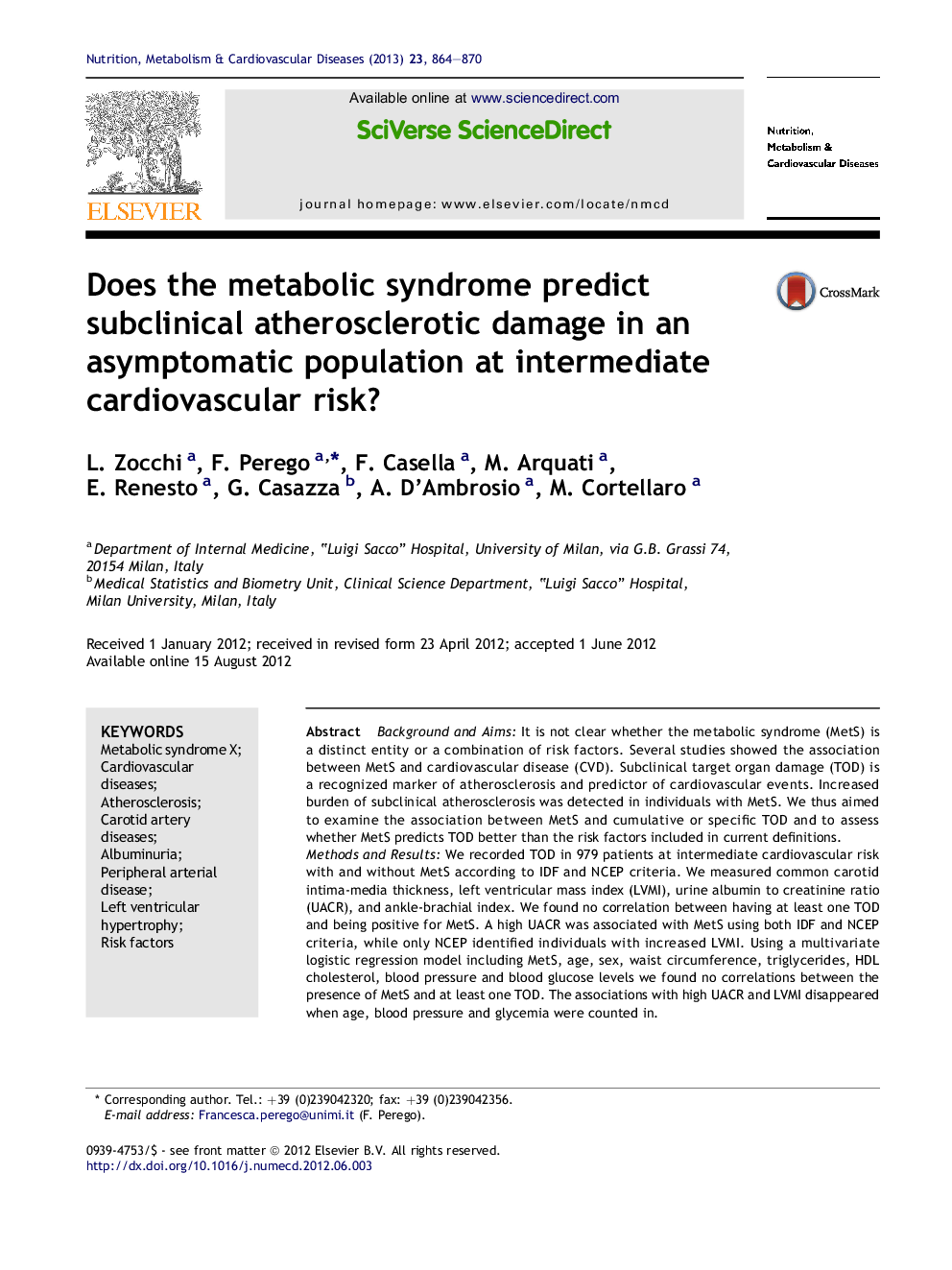| Article ID | Journal | Published Year | Pages | File Type |
|---|---|---|---|---|
| 3002337 | Nutrition, Metabolism and Cardiovascular Diseases | 2013 | 7 Pages |
Background and AimsIt is not clear whether the metabolic syndrome (MetS) is a distinct entity or a combination of risk factors. Several studies showed the association between MetS and cardiovascular disease (CVD). Subclinical target organ damage (TOD) is a recognized marker of atherosclerosis and predictor of cardiovascular events. Increased burden of subclinical atherosclerosis was detected in individuals with MetS. We thus aimed to examine the association between MetS and cumulative or specific TOD and to assess whether MetS predicts TOD better than the risk factors included in current definitions.Methods and ResultsWe recorded TOD in 979 patients at intermediate cardiovascular risk with and without MetS according to IDF and NCEP criteria. We measured common carotid intima-media thickness, left ventricular mass index (LVMI), urine albumin to creatinine ratio (UACR), and ankle-brachial index. We found no correlation between having at least one TOD and being positive for MetS. A high UACR was associated with MetS using both IDF and NCEP criteria, while only NCEP identified individuals with increased LVMI. Using a multivariate logistic regression model including MetS, age, sex, waist circumference, triglycerides, HDL cholesterol, blood pressure and blood glucose levels we found no correlations between the presence of MetS and at least one TOD. The associations with high UACR and LVMI disappeared when age, blood pressure and glycemia were counted in.ConclusionAlthough MetS showed some relation with subclinical renal and cardiac damage, it does not predict TOD any better than the risk factors specified in the definitions.
